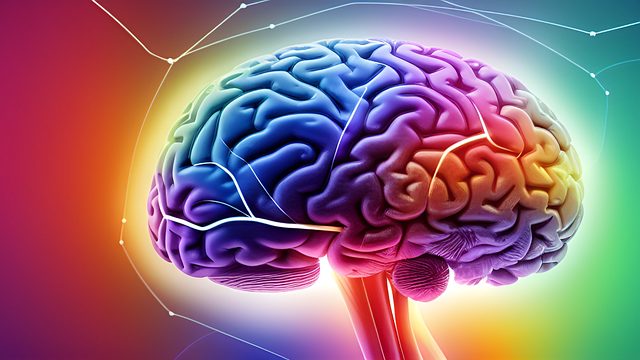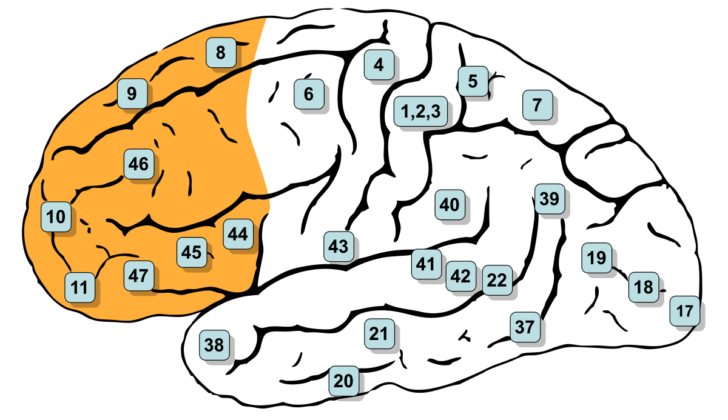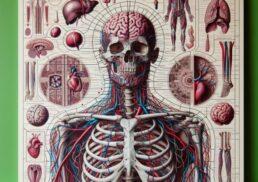Imagine being able to unlock the full potential of your brain, harnessing the power of a region that controls your decision-making, emotions, and goal-setting abilities. That’s the promise of understanding and enhancing the prefrontal cortex, a crucial part of our brain that acts as the conductor of the cerebral orchestra. In this blog post, we’ll delve into the fascinating world of the prefrontal cortex, exploring its significance, anatomy, connections, and implications for mental health, as well as strategies for optimizing its function and practical applications of prefrontal cortex research.
Table of Contents
Key Takeaways
The prefrontal cortex plays a key role in cognitive and behavioral processes, executive functions, emotional regulation, goal-oriented actions and more.
Damage to the prefrontal cortex can lead to mental health disorders such as cognitive impairments and emotional dysregulation.
Enhancing prefrontal cortex function is possible through regular aerobic exercise and mindfulness practices for improved cognitive performance & emotional balance.
The Significance of the Prefrontal Cortex

The anterior portion of the frontal lobe, known as the human prefrontal cortex, plays a vital role in human cognition and behavior as part of the cerebral cortex. It is responsible for executive functions, emotional regulation, and goal-oriented actions, making it the control center of our thoughts and actions in line with internal objectives. The frontal cortex, which includes the prefrontal cortex, is a crucial component of the brain’s overall function.
The prefrontal cortex, a complex and intriguing brain region, intertwines elements of:
self-awareness
intricate planning
problem-solving
learning and memory
personality expression
decision-making
social behavior modulation
Executive Functions
Executive functions, cognitive processes like decision-making, social behavior moderation, and abstract rule learning, are governed by multiple areas of the prefrontal cortex, including the lateral prefrontal cortex.
The prefrontal cortex, especially the medial prefrontal cortices, plays a critical role in:
Decision-making
Executive control
Memory-guided decision-making
Concrete rule learning
Higher levels of abstraction.
Emotional Regulation
Managing emotions and maintaining emotional stability, a process known as emotional regulation, is fundamental to mental health. The prefrontal cortex plays a significant role in emotional regulation, as it is involved in both emotion induction and emotion regulation, serving as a manager of emotions to regulate fear and anxiety and weigh reactions before acting on them.
Damage to the prefrontal cortex can result in impaired emotional regulation, reduced social functioning, and a heightened risk of suicide.
Goal-Oriented Actions
The primate prefrontal cortex contributes to facilitating goal-oriented actions like planning and organizing, thereby enabling individuals to achieve their objectives. The prefrontal cortex is integral to decision-making for goal-oriented actions, as it is involved in processes such as forming and executing goals, associating value to action, and regulating and organizing goal-directed behavior.
In the context of the brain regions involved, the ventromedial prefrontal cortex, ventral prefrontal cortex, ventrolateral prefrontal cortex, and dorsolateral prefrontal cortex are particularly implicated in these processes.
Anatomy of the Prefrontal Cortex

Located directly behind the eyes and forehead, you’ll find the prefrontal cortex. It comprises several Brodmann areas, including:
8
9
10
11
12
13
14
24
25
32
44
45
46
47
Damage to the prefrontal cortex can lead to alterations in personality and the capacity to direct behavior in accordance with one’s values and objectives.
The prefrontal cortex maintains a neural representation of a long-term goal, allowing us to stay focused and not be swayed by competing goals or alternate values.
Subregions
Comprising various subregions, the prefrontal cortex supports a variety of cognitive processes and maintains interconnections for efficient operation. These subregions include the dorsolateral prefrontal cortex, the medial and cingulate prefrontal cortex, and the inferior orbital prefrontal cortex. Each subregion is associated with specific functions, such as the dorsolateral prefrontal cortex’s involvement in executive functions like working memory, cognitive flexibility, planning, inhibition, and abstract reasoning.
The different regions of the prefrontal cortex have distinct functions:
The dorsolateral prefrontal cortex is involved in working memory, cognitive flexibility, and decision-making.
The ventromedial prefrontal cortex is responsible for emotional regulation and social behavior.
The medial and cingulate prefrontal cortex play a role in cognitive processes like complex executive functions, learning associations between context and adaptive responses, and processing emotions.
The inferior orbital prefrontal cortex is involved in processing reward value and connecting with other brain regions such as the anterior cingulate cortex, striatum, insula, and inferior frontal gyrus.
Development and Maturation
Compared to most other brain structures, the prefrontal cortex grows more slowly and for a more extended period. Full structural maturation of cells and connections doesn’t occur until young adulthood. It is generally thought to reach its full maturity around the age of 25.
Delayed maturation of the prefrontal cortex can have a range of effects, including:
Heightened neurobehavioral activity
Deleterious effects on childhood behavior
Impaired executive functions
Structural abnormalities
Interestingly, females tend to have a greater volume in the prefrontal cortex compared to males, and their prefrontal cortex matures earlier.
Connections and Interactions
Connected to various brain regions, the prefrontal cortex can integrate information and exert influence on a broad array of cognitive processes. These connections include:
Long association pathways to post-Rolandic regions
Connections to subcortical structures involved in motor control such as the basal ganglia and cerebellum
Connections to cortical areas such as the insula, fronto-parietal operculum, and superior temporal sulcus.
By forming connections with other brain regions, the prefrontal cortex facilitates complex cognitive abilities and behaviors, as well as interacts with regions like the amygdala to modulate emotional influences on cognitive processes.
Reciprocal Connections
Mutual connections between the prefrontal cortex and other brain structures like the thalamus and limbic formations, allow for the coordination of complex cognitive tasks. The mutual connections between the prefrontal cortex and the thalamus are essential for cognition and information processing, while the prefrontal cortex’s connection with limbic formations allows for top-down control on the execution of goal-directed behaviors and the integration of emotions and thoughts.
Neural Mechanisms
Neural mechanisms in the prefrontal cortex aid in merging sensory perception, memory, and emotions, which leads to effective decision-making and action planning.
Research on the prefrontal cortex’s neural processes in decision-making suggests that the medial prefrontal cortex (mPFC) may be involved, while other studies propose the prefrontal cortex (PFC) as a whole plays a significant role in the decision-making process.
These neural mechanisms allow the prefrontal cortex to function optimally and coordinate complex cognitive tasks.
The Prefrontal Cortex in Mental Health
Functional impairments in the prefrontal cortex can result in cognitive deficits and emotional dysregulation, contributing factors to a variety of mental health disorders. Some commonly observed deficits associated with prefrontal cortex damage include:
Cognitive control
Memory
Attention
Decision-making
Problem-solving
Executive functioning
On the other hand, emotional dysregulation can manifest as mood instability, aggression, and heightened emotional symptoms such as depression, anxiety, and apathy.
Cognitive Impairment
Damage or dysfunction in the prefrontal cortex can lead to cognitive impairments, such as difficulties in decision-making and abstract thinking. The prefrontal cortex is integral to:
Abstract thinking
Integrating abstract, self-generated concepts
Aiding in the formation and execution of goals
Higher-order cognitive functions, including working memory, planning, and decision-making.
Damage to the prefrontal cortex can lead to cognitive impairments in these areas, potentially contributing to mental health disorders.
Emotional Dysregulation
Abnormalities in prefrontal cortex function can be associated with emotional dysregulation, which includes mood instability and aggression. The prefrontal cortex is known to be a key factor in the generation and regulation of emotions, and dysfunction in this region can impede the ability to effectively regulate emotions.
Inadequate emotional regulation can lead to decreased social functioning, reduced leisure activity, and an elevated risk of suicide.
Strategies for Enhancing Prefrontal Cortex Function
Consistent aerobic exercise and mindfulness practices can boost the function of the prefrontal cortex, thereby promoting cognitive and emotional well-being. Regular aerobic exercise has been shown to improve prefrontal cortex function, leading to better executive functioning and emotional regulation.
Mindfulness practices, such as meditation and yoga, can help strengthen prefrontal cortex function, resulting in improved focus, decision-making, and emotional stability.
Consistent Aerobic Exercise
Regular aerobic exercise can positively impact the prefrontal cortex by enhancing cognitive performance and executive functioning, and preserving gray matter volume and executive function.
Studies have shown that aerobic exercise can have several benefits, including:
Enhancing executive functioning even in healthy individuals
Reducing levels of depression, anxiety, and psychosocial stress
Improving cognitive abilities in children.
It is recommended to perform aerobic exercise at a moderate to high intensity, up to 80% of maximal intensity, for short durations to promote optimal prefrontal cortex health.
Mindfulness Practices
Practicing mindfulness can strengthen prefrontal cortex function, resulting in improved concentration, decision-making, and emotional balance. Dispositional mindfulness, mindfulness meditation, regular meditation, and focused attention-based meditation are all mindfulness practices that have been shown to be beneficial for the prefrontal cortex.
By engaging in these practices, individuals can strengthen their prefrontal cortex function and improve their overall cognitive and emotional well-being.
Practical Applications of Prefrontal Cortex Research
Prefrontal cortex research has practical implications in therapeutic interventions and educational strategies. These applications can benefit individuals facing cognitive and emotional challenges. Some examples of these applications include:
Neuromodulation targeting the medial prefrontal cortex (mPFC) to enhance response to exposure-based therapies
Increasing activity in the prefrontal cortex to reduce intentions of aggression
Non-invasive brain stimulation (NBS) studies targeting the prefrontal cortex
The concurrent application of cognitive behavioral therapy (CBT) and transcranial direct electrical stimulation
All of these are current therapeutic interventions targeting prefrontal cortex function.
Incorporating strategies to enhance prefrontal cortex function into educational approaches can result in improved learning outcomes and overall cognitive development.
Therapeutic Interventions
Targeting prefrontal cortex function through therapeutic interventions can enhance cognitive and emotional well-being in individuals suffering from mental health disorders. Noninvasive neuromodulation techniques, such as noninvasive brain stimulation, have been found to reduce anxiety and depression scores, while FDA-approved brain stimulation therapies targeting the prefrontal cortex have been successful in treating conditions like major depression and bipolar disorder.
Additionally, psychosocial interventions and cognitive behavioral therapy have been demonstrated to be effective in treating mental health disorders.
Educational Approaches
Incorporating strategies to enhance prefrontal cortex function into educational approaches can result in improved learning outcomes and overall cognitive development. Research indicates that adults with higher educational attainment may benefit more from educational approaches, potentially resulting in improved health outcomes and greater longevity in comparison to those with lower educational attainment.
However, it is essential to emphasize the importance of providing high-quality educational opportunities to children and adolescents for the purpose of promoting their overall wellbeing and academic success.
Learn more, visit Integration of Teaching Processes and Learning …
Summary
In this blog post, we have explored the fascinating world of the prefrontal cortex, a crucial brain region responsible for executive functions, emotional regulation, and goal-oriented actions. We have delved into the anatomy, connections, and neural mechanisms of the prefrontal cortex, as well as its role in mental health and the strategies that can be employed to enhance its function. From therapeutic interventions to educational approaches, research on the prefrontal cortex offers practical applications that can improve the cognitive and emotional well-being of individuals facing various challenges. By understanding and harnessing the power of the prefrontal cortex, we can unlock our full potential, enabling us to achieve our goals and live more fulfilling lives.
Frequently Asked Questions
What is the main function of prefrontal cortex?
The main function of the prefrontal cortex (PFC) is to intelligently regulate thoughts, actions and emotions, enabling complex decision making, executive functions, problem solving and learning.
What are 3 things that the prefrontal cortex does?
The prefrontal cortex is responsible for executive functions such as focusing attention, predicting consequences, managing impulses and emotions, complex planning, problem solving, learning and memory, personality expression, decision making and social behavior modulation.
How does ADHD affect the prefrontal cortex?
ADHD has been associated with weaker functioning and structure of the prefrontal cortex circuits, which play a crucial role in regulating attention, behavior, and emotion. This disruption can lead to impaired cognitive and motivational functioning and can affect executive functions such as cognition, working memory, and decision-making.
How can I enhance my prefrontal cortex function?
To enhance prefrontal cortex function, engage in regular aerobic exercise and practice mindfulness techniques, such as meditation and yoga.
What is the relationship between the prefrontal cortex and mental health?
The prefrontal cortex plays an important role in mental health, as impairments to its functioning can result in cognitive deficits and emotional dysregulation, which can lead to various mental health disorders.









